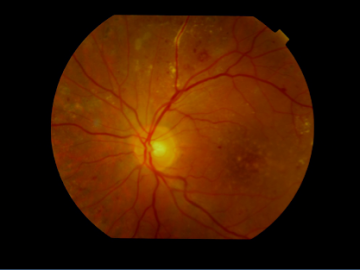WHAT IS DIABETIC RETINAL DISEASE?
Diabetic retinopathy is the medical name for diabetic retinal disease. Diabetic retinopathy is the main cause of vision loss among working-age adults. In diabetic retinopathy, retinal blood vessels are damaged and begin to leak fluid or blood.
IS BLOOD SUGAR LEVEL CONTROL IMPORTANT?
Yes, diabetic retinopathy will develop much later in patients who can better control their blood sugar levels, and even if it does, the progression will be slower.
HOW OFTEN SHOULD DIABETIC PATIENTS UNDERGO OPHTHALMOLOGIC EXAMINATION?
In patients without diabetic retinopathy, annual ophthalmologic examinations are sufficient. However, patients with diabetic retinopathy should be examined quarterly or semi-annually.
WHAT PRECAUTIONS SHOULD BE TAKEN?
Patients shouldn’t smoke. In alleviating the progression of diabetic retinopathy, controlling hypertension, lowering blood lipid levels and treating anemia are crucial.
WHAT ARE THE SYMPTOMS?
Typically, diabetic retinopathy doesn’t cause sudden vision loss. Vision levels are usually fine at the onset of the disease. This is when the disease should be diagnosed and treated. Those patients diagnosed at the advanced stages usually end up with low vision. 
Figure 1: Diabetic retinopathy
HOW IS DIABETIC RETINOPATHY DIAGNOSED?
Your ophthalmologist will first give you an overall ophthalmologic examination followed by the administration of an eye drop to dilate the pupil and examine the retina. Special lenses are used in retinal examination. If necessary, an Optical Coherence Tomography (OCT) and Fluorescein Angiography will be performed.
WHAT IS THE TREATMENT FOR DIABETIC RETINOPATHY?
Ophthalmologic treatments have greatly improved over the years. Accordingly, a treatment plan will be made depending on the severity of your condition. Early stages of diabetic retinopathy typically involve follow-up and blood sugar level control.
The progression of the disease will be monitored through clinical examination and ophthalmologic tests.
The progression initially involves decreased vision due to macular edema which is treated by laser therapy and intraocular injections. In most cases, these therapies will help alleviate the progress of the disease. If not, progression despite laser therapy and intraocular injections may cause hemorrhages. A certain part of intraocular hemorrhages clear after a while, otherwise a surgical intervention called Pars Plana Vitrectomy is performed.
In some cases of advanced diabetes, thick membranes that wrinkle or fold the back of the eye may cause retinal damage. In such Advanced Diabetic Retinopathy cases, vitrectomy (retinal surgery) may become necessary.